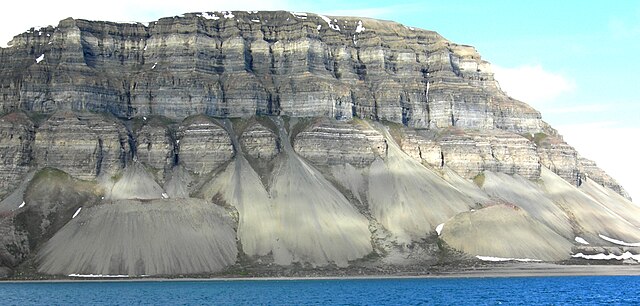A mudflow, also known as mudslide or mud flow, is a form of mass wasting involving fast-moving flow of debris and dirt that has become liquified by the addition of water. Such flows can move at speeds ranging from 3 meters/minute to 5 meters/second. Mudflows contain a significant proportion of clay, which makes them more fluid than debris flows, allowing them to travel farther and across lower slope angles. Both types of flow are generally mixtures of particles with a wide range of sizes, which typically become sorted by size upon deposition.
Mailboxes caught in a mudflow following the May 1980 Mount St. Helens volcanic eruption.
The Mameyes mudflow disaster, in barrio Tibes, Ponce, Puerto Rico, was caused by heavy rainfall from Tropical Storm Isabel in 1985. The mudflow destroyed more than 100 homes and claimed an estimated 300 lives.
Mass wasting, also known as mass movement, is a general term for the movement of rock or soil down slopes under the force of gravity. It differs from other processes of erosion in that the debris transported by mass wasting is not entrained in a moving medium, such as water, wind, or ice. Types of mass wasting include creep, solifluction, rockfalls, debris flows, and landslides, each with its own characteristic features, and taking place over timescales from seconds to hundreds of years. Mass wasting occurs on both terrestrial and submarine slopes, and has been observed on Earth, Mars, Venus, Jupiter's moon Io, and on many other bodies in the Solar System.
Talus cones produced by mass moving, north shore of Isfjord, Svalbard, Norway
Mass wasting at Palo Duro Canyon, West Texas (2002)
A rockfall in Grand Canyon National Park
Curved tree trunks in an area of soil creep on Grand Mesa, Colorado, US






